Whitewater Kayaking Gear Beginner Purchasing Guide
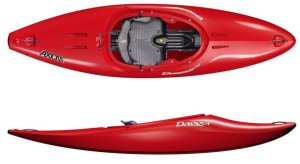 Words:
Words:
Matthew Ellenberg
In order to go kayaking you need the five essentials: kayak, paddle, helmet, PFD, and sprayskirt. When it gets cooler, you’ll also need insulating layers and a few other things. Choosing which one to buy can be overwhelming for a new paddler with all of the options out there.
There are many things that are good for beginners, but there are also many things you’ll want to avoid. I have compiled a list of gear I believe is high quality and relatively inexpensive. Hopefully you can use this as a guideline and feel free to contact any of us if you have more specific questions.
Kayak
You want something that is easy to learn how to roll, how to edge and maneuver, and something you’ll feel comfortable sitting in for several hours. For your first kayak, avoid edgy, boxy, advanced freestyle kayak as they’ll be more difficult to roll and will get stopped in holes much easier. I would also avoid long boats (over 9’), as they’ll be more difficult to turn.
Creek boats are good, but once you get the roll, you’ll want something slightly edgier and more playful (even if you aren’t planning on being a freestyle kayaker). Once you get hooked and learn the basics, then you may want a playboat, longboat, and creekboat as they are a lot of fun, but they’ll make the learning curve steeper initially.
Look at boats that you’re in the middle of the weight range for and are classified as “free running” or “river running”. The boats I’ve selected come in a range of sizes, they are designed to roll easily, maneuver through whitewater, and get the basics of edge control. I would have to choose the Axiom over the Remix because I think the hull (bottom of the boat) is better shaped for carving across waves and edging, but the Remix is still a great design.
Make sure you don’t get the Remix XP as it’s designed for lake/flatwater kayaking and will struggle in whitewater. It is all right to purchase a used kayak, especially for your first one. I recommend looking on craigslist, boatertalk.com, and Appomattox River Company for deals in your area and asking an RVA Paddlesport staff for advice on any deal you come across.
• Dagger Axiom MSRP $629-1029
• Liquidlogic Remix MSRP $1149
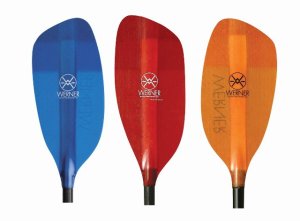 Paddle
Paddle
When purchasing a paddle, you’ll need to decide on blade material, blade shape, shaft length, and shaft shape. You’ll want something comfortable, strong, and durable.
Paddles have 4 types of blade material with plastic being the weakest and cheapest, fiberglass being the next level up, carbon glass being next, then foam core being the most expensive. I recommend fiberglass paddles because they are durable, perform well, and aren’t too expensive. Even though fiberglass is almost twice as expensive as plastic, it’ll perform much better and have a lifespan over twice as long. I listed the plastic Werner Rio on my list for people who absolutely can’t afford to spend more, but remember, you get what you pay for here.
Blade shape comes in two general shapes, freestyle and river running. I tend to like freestyle blade shapes because they are responsive and easy for learning subtle stroke maneuvering.
Paddle shafts come straight or bent. I like straight shaft because they are less expensive and work just as well. There is some thought that bent shafts provide a more ergonomic grip, but if you learned with straight shaft, I’d recommend going that route and saving money.
The length of the paddle is based on your height (wingspan). Under 4’8” use 188cm, 4’8”-5’2” 191cm, 5’2”-5’8” 194, 5’8”-6’ 197, then over 6’ use 200cm. If you are more into river running, side on the longer end and if you think you’ll be interested in freestyle, go shorter.
• Werner Fiberglass Player Straight shaft 30 degree feather MSRP $250
• Werner Rio MSRP $130
• Adventure Technology also makes excellent paddles
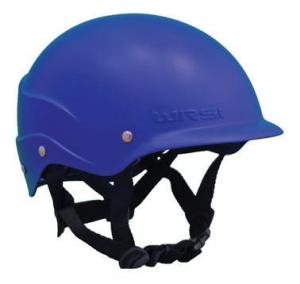 Helmet
Helmet
Kayaking helmets are probably the most important piece of gear you can buy. You want something that is comfortable, but strong and will not move around on your head. WRSI (Whitewater Research and Safety Institute) has a system built in to hold the helmet in place on your head; in fact, they test them by blasting a mannequin wearing the helmet with a fire hose.
The Current is a great helmet, safe and inexpensive. The Trident is equally as safe, but some people like the baseball cap style and think it looks better.
• WRSI Current Helmet (with or without vents) MSRP $79.95
• WRSI Trident Composite Helmet MSRP $167.95
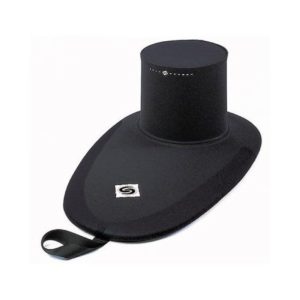 Sprayskirt
Sprayskirt
Sprayskirts come in two types, shock cord and rand. I recommend shock cord skirts for newer paddler because they are easier to put on. Rand skirts are great for advanced whitewater. Snapdragon makes good quality skirts that are reasonably priced and will last a while. Immersion Research also makes good skirts.
For sizing, you have two measurements, the tube (goes around your body) and the cockpit (goes around the boat). Tube size is obviously specific to your waistline, but I’d recommend going a little smaller as they stretch and you want a tight fit to keep water out.
For the cockpit, most kayaks will be a large. If you have an Axiom 6.9 (the smallest one), you’ll want a medium cockpit, and if you have an Axiom 9.0 (the biggest one), you’ll want an XL.
• Snapdragon White Water EXP (Flirt EXP for women) MSRP $115
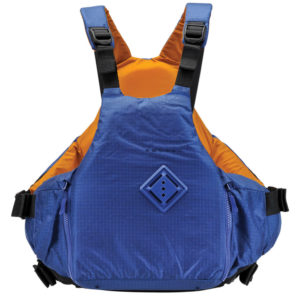 PFD
PFD
You want something that will allow for good range of motion and feel comfortable, but still offer padding/protection. Avoid PFDs designed for fishing, wakeboarding, or rafting as they all have features that will limit your range of motion for whitewater kayaking.
I really like these:
• NRS Vapor MSRP $79.95
• Astral Abba (women’s) MSRP $109.95
• Astral YTV MSRP $119.95
Other gear you may want
Apparel
There are many options here and what you want depends on what type of weather you’re trying to paddle in. If you plan on paddling in the fall/spring, you will want a neoprene layer to keep you insulated but not completely dry. The NRS Hydroskin is a neoprene layer with stretchier fabric in areas that move a lot.
If you plan on paddling in the winter, you’ll want a drytop and layers to keep you dry. Layering is just like with winter sports, you want a waterproof outer shell (drytop/drysuit) and base layers that will wick water from your body (like polyester). It is important not to over-layer because you’ll get hot, start sweating, and then get wet/cold. In moderate cold temperatures, often a rash guard will work, but when it gets colder, I use something like the Immersion Research ThickSkin shirt or NRS H2Core Expedition shirt.
• NRS Men’s/Women’s Flux Drytop MSRP $324.95
• Immersion Research LS ThickSkin MSRP $45-67 depending on size/color/gender
• NRS Men’s/Women’s H2Core Expedition LS shirt
• NRS Men’s/Women’s HydroSkin 0.5 Long Sleeve Shirt MSRP $97.95
Shoes:
You want something that can get wet, drain easily, have grippy bottoms, and be relatively low profile so that they can be on your feet in the front of your kayak. Chaco sandals tend to not be good kayaking shoes even though we all love to wear them on the river because they have a big rigid rubber sole. Some of my favorites are:
• Astral Brewer/Brewess watershoe MSRP $99.95
• NRS Men’s/Women’s Crush watershoe MSRP $79.95 (out in 2015)
• NRS Desperado wetshoe $54.95
• NRS Men’s/Women’s Kicker Remix wetshoe $44.95
Throwbag:
This is an important piece of safety equipment. Be sure to get instruction on how to throw, stuff, and store it before you need it. It also doubles to help tie kayaks onto cars when your friend forgot their cam straps.
• NRS Wedge Rescue Throw Bag MSRP $49.95
Float Bags:
These are important for easy rescue when you’re still mastering the roll. They fit in the back of the kayak and displace water that would fill your boat when you swim.
• NRS Rodeo Split Stern Floatation MSRP $54.95 for a pair
Roof rack:
This will be specific to your car, Thule and Yakima both sell bars that cross the roof horizontally and they are both excellent. They sell extra accessories, but all you need is the bars and cam straps or ropes. Quick-N-Easy racks also work well and are cheaper than Yakima or Thule if you have rain gutters. Thule and Yakima’s websites will tell you which kind of mount you need to put bars on your car.
